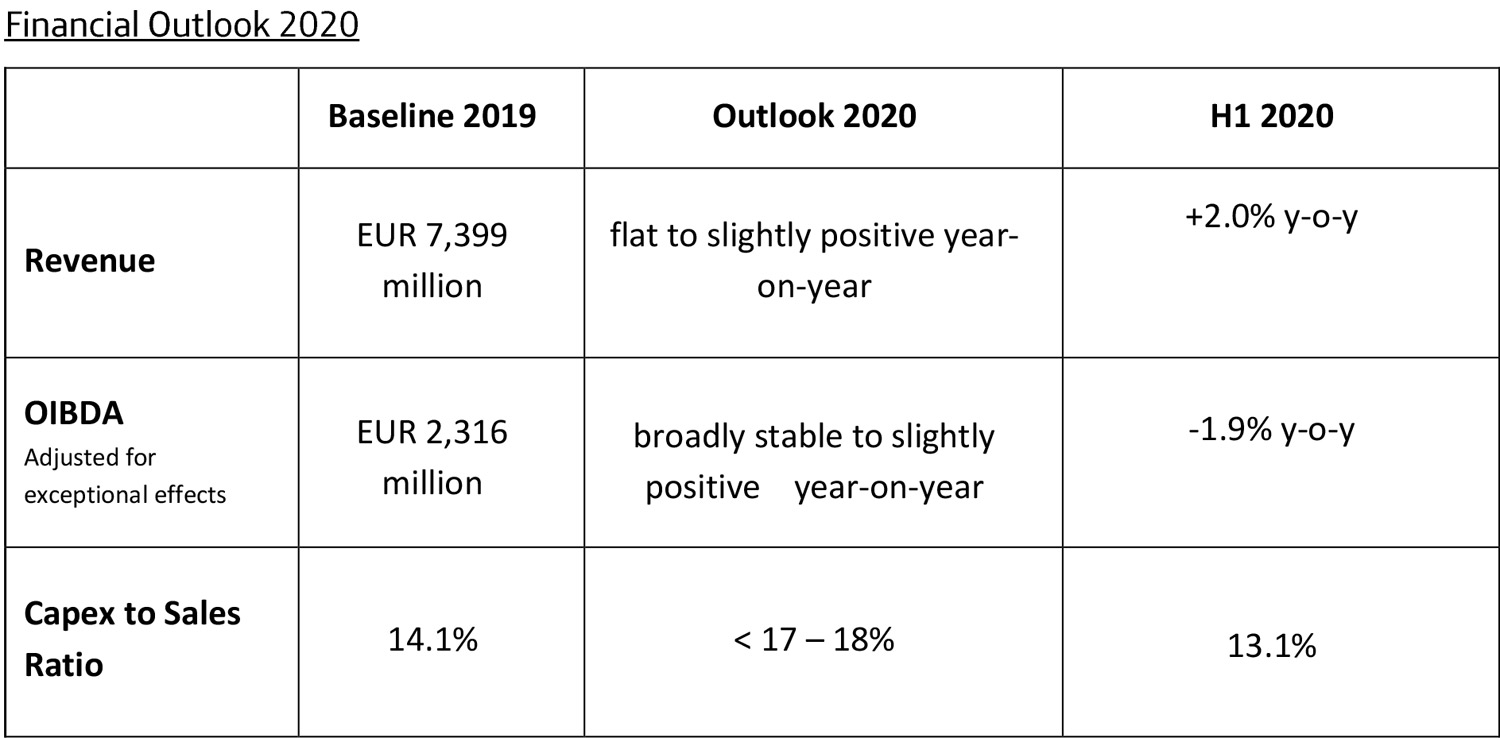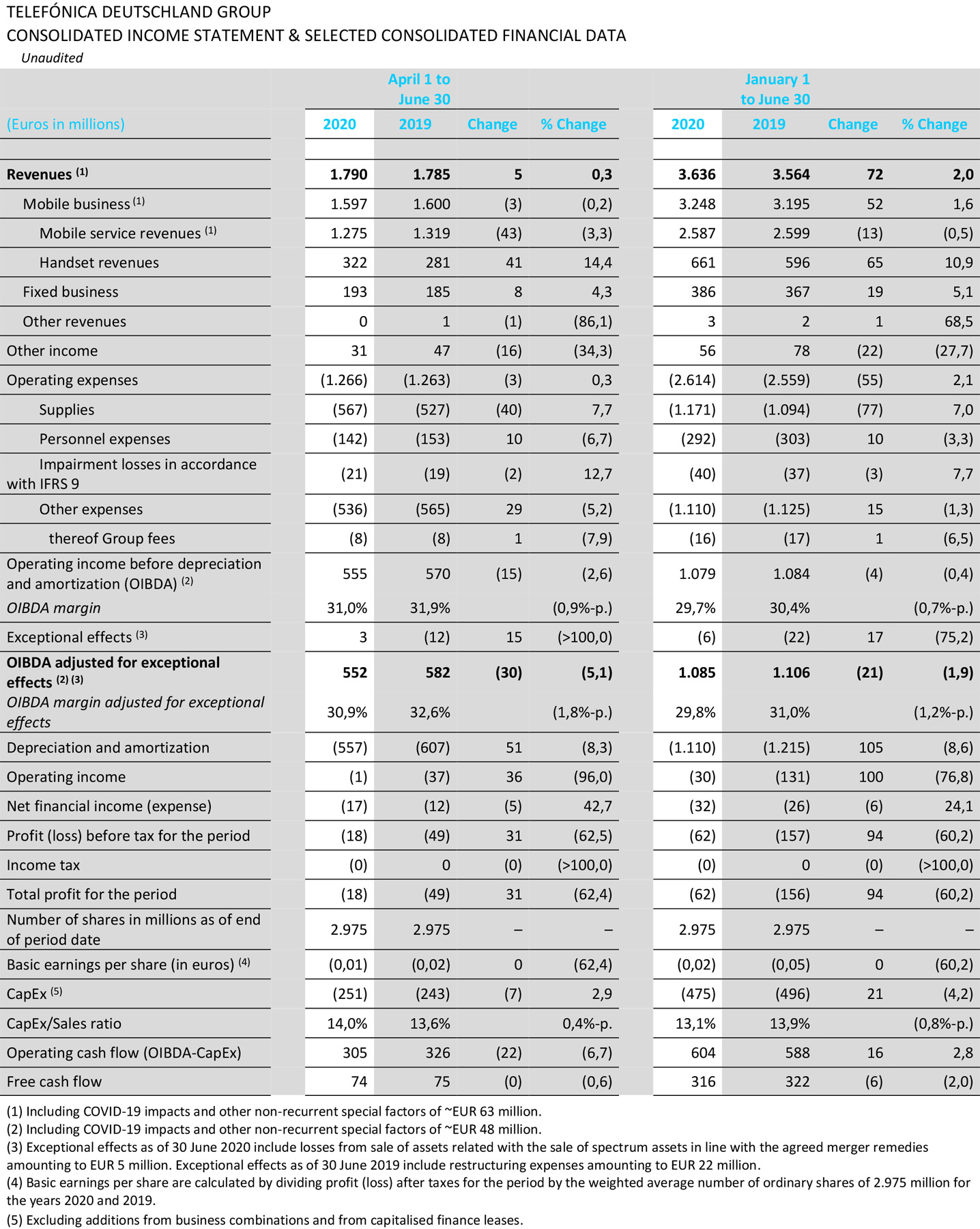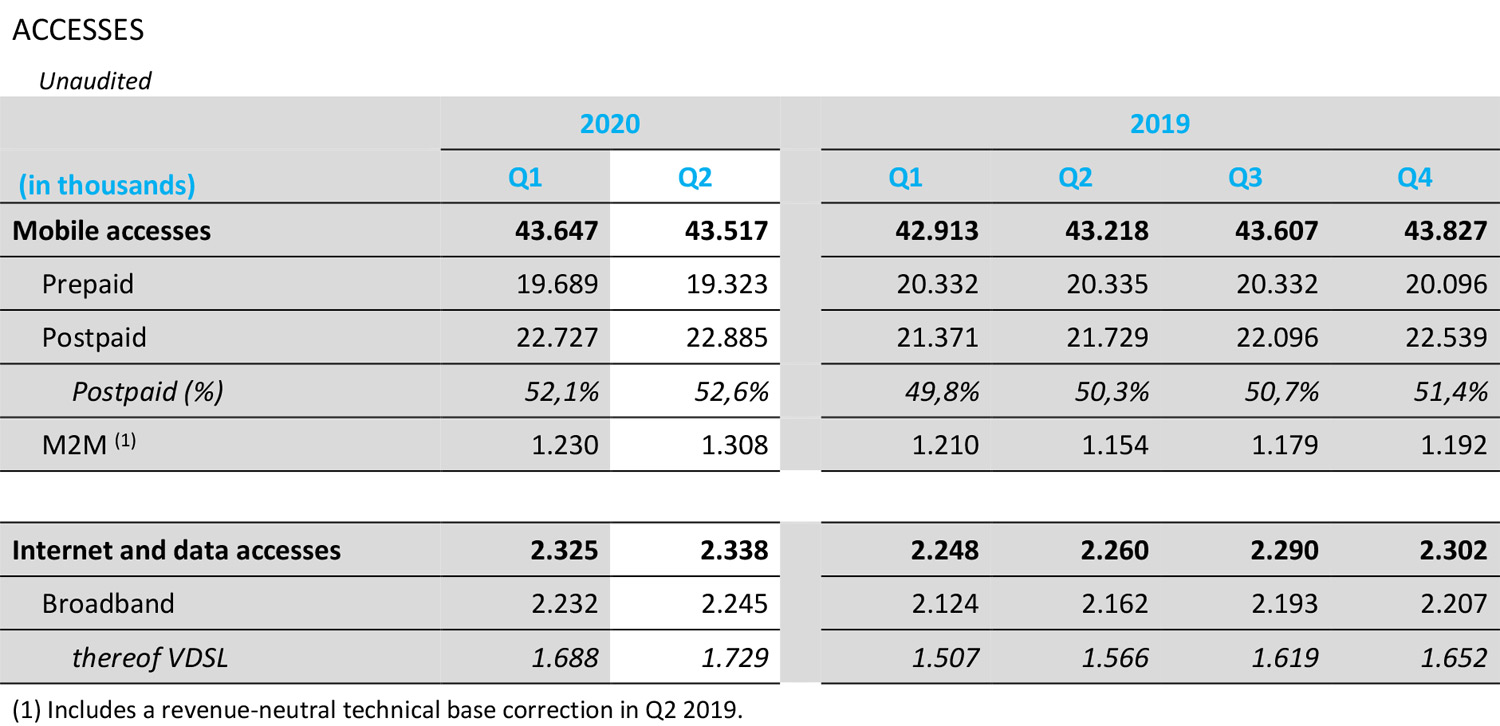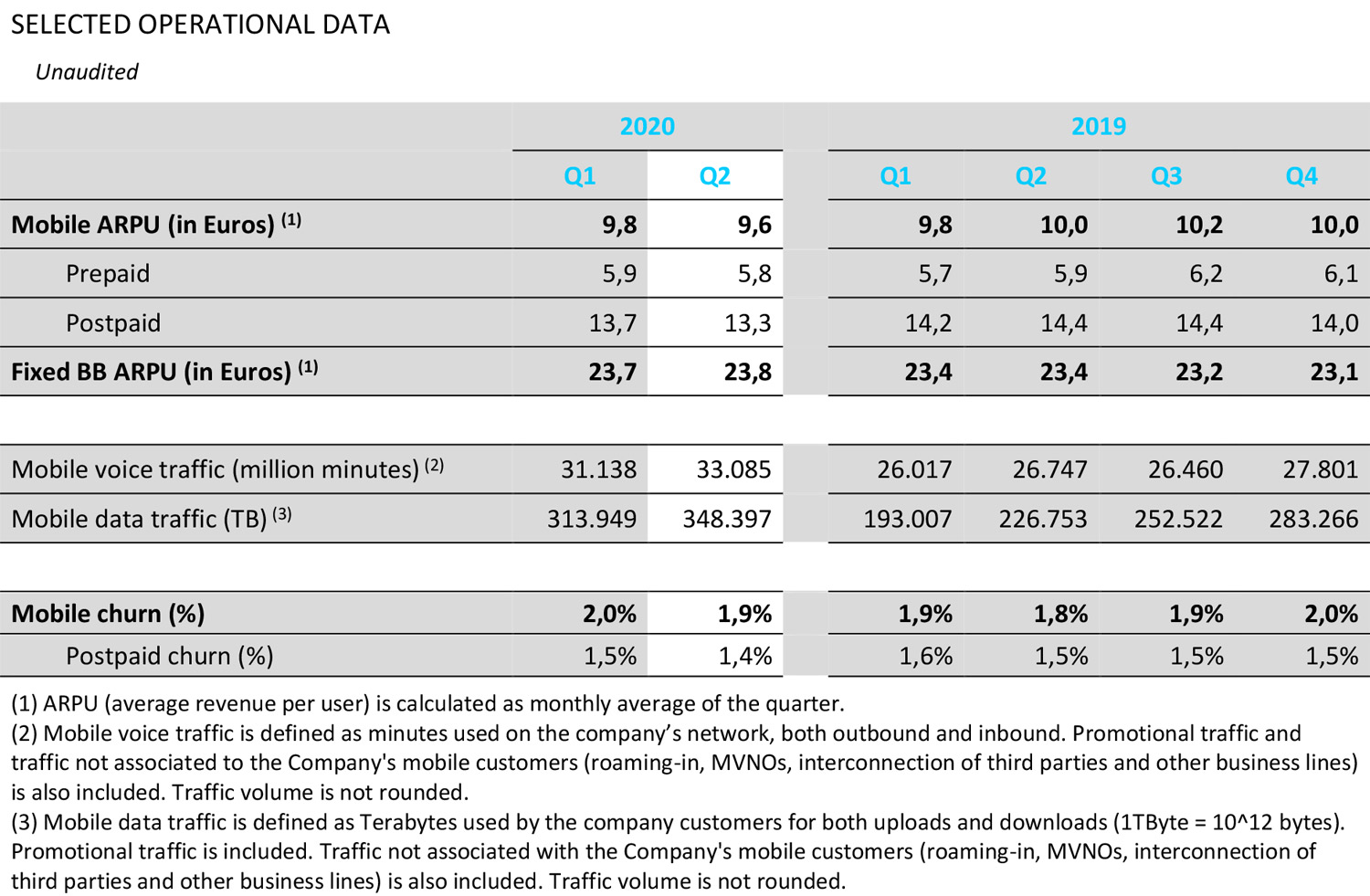29.07.2020
Interim statement for the first half of 2020:Telefónica Deutschland / O2 shows relative strength in the first half year and confirms revenue and OIBDA outlook

Markus Haas
Telefónica Deutschland / O2 has had a robust first half-year against the background of the ongoing COVID-19 pandemic. The company's revenue grew from January to June due to the stability in the mobile core business and the demand for handsets and fixed-network tariffs. Adjusted OIBDA declined slightly, in part due to reduced international roaming due to travel restrictions. Particularly towards the end of the reporting quarter in June, business momentum improved again. In terms of network expansion, Telefónica Deutschland is on track to achieve its expansion targets despite the pandemic. The company confirms its revenue and OIBDA outlook for the current year and will continue to closely monitor and analyse the impact of COVID-19 on its business.
“Our performance was robust in the first half of the year and we are showing relative strength compared to our competitors and the industry,” said Markus Haas, the company’s chief executive officer. “Telefónica Deutschland / O2 remains an anchor of stability in the German economy. Our core business is intact. However, we could not completely escape the effects of COVID-19. The business momentum brightened again towards the end of the quarter.”
- Revenue grows by 2.0 percent in the first half-year thanks to robust core business
- Adjusted OIBDA declines by 1.9 percent due to combined COVID-19 impacts and other non-recurrent special factors
- 463,000 postpaid accesses gained since the end of 2019
- Demand for tariffs and roaming services is improving, especially from June onwards
- Markus Haas: "Our performance was robust in the first half of the year and we are showing relative strength compared to our competitors and the industry. Telefónica Deutschland / O2 remains an anchor of stability in the German economy. Our core business is intact. However, we could not completely escape the effects of COVID-19. The business momentum brightened again towards the end of the quarter."
Strong contract customer growth even during the pandemic

In the mobile communications business, growth in the number of postpaid accesses continued even during the COVID-19 pandemic. The company has added 463,000 postpaid lines since the beginning of the year, 235,000 of them in the second quarter alone. A key driver was the positive development of the core brand O2. 78,000 of the lines added in the second quarter were machine-to-machine (M2M) lines. Another factor was the low churn rate. For O2 postpaid customers, the churn rate was 1.2 percent in the first half of the year compared to 1.3 percent in the same period last year. The churn rate is expected to remain at a low level in the coming months because fewer customers terminate their contracts in times of crisis.
In total, Telefónica Deutschland / O2 supplied 43.5 million mobile accesses at the end of June, of which 42.2 million were SIM cards for smartphones, tablets and wearables. This means that no provider in Germany connects more people with mobile services.
Growth also continued in the fixed-network business. The number of broadband lines increased by 3.8 percent to 2.25 million in the first half of the year, mainly due to higher demand for fast VDSL lines.
Robust revenue development

Thanks to the stable demand for mobile communications services, but also to the strong handset and fixed-network business, overall revenue developed robustly in the first half of the year. It increased by 2.0 percent to 3.64 billion euros in the first six months. Adjusted for combined COVID-19 impacts and other non-recurrent special factors1, growth would have amounted to 3.8 percent.
Mobile service revenue decreased slightly by 0.5 percent to 2.59 billion euros in the reporting period, mainly due to lower roaming activity and fewer prepaid top-ups. Excluding the above-mentioned effects, revenue would have increased by 1.8 percent, driven by the continued strong demand for contracts with large data volumes.
Smartphones and tablets continued to enjoy great popularity during the pandemic, especially in online sales. Sales of terminal equipment grew by 11 percent to 661 million euros in the first half of the year. And in the fixed network, growth in broadband lines was reflected in a 5.1 percent increase in revenue to 386 million euros.
Operating profit excluding one-off special items continues to grow
The reduced business dynamics during the pandemic also affected the operating result of Telefónica Germany / O2. In the first half of the year adjusted OIBDA decreased by 1.9 percent to 1.08 billion euros. This was due to the significantly lower travel activity and thus reduced roaming volume. Excluding COVID-19 impacts and other non-recurrent special factors2, growth amounted to 2.4 percent.
Following the results of the first half of the year, Telefónica Deutschland / O2 confirms its revenue and OIBDA outlook for the full year. The company will continue to closely monitor the impact of the COVID-19 pandemic on its business.
The net result for the first six months amounted to minus 62 million euros, which was an improvement compared to the result of minus 156 million euros in the same period last year. The reason for the negative result is that depreciation and amortization – including on wireless spectrum licenses acquired years ago – currently still exceeds operating profit. The amortization of UMTS licenses, which is partly responsible for this, expires at the end of 2020.
Network expansion on track
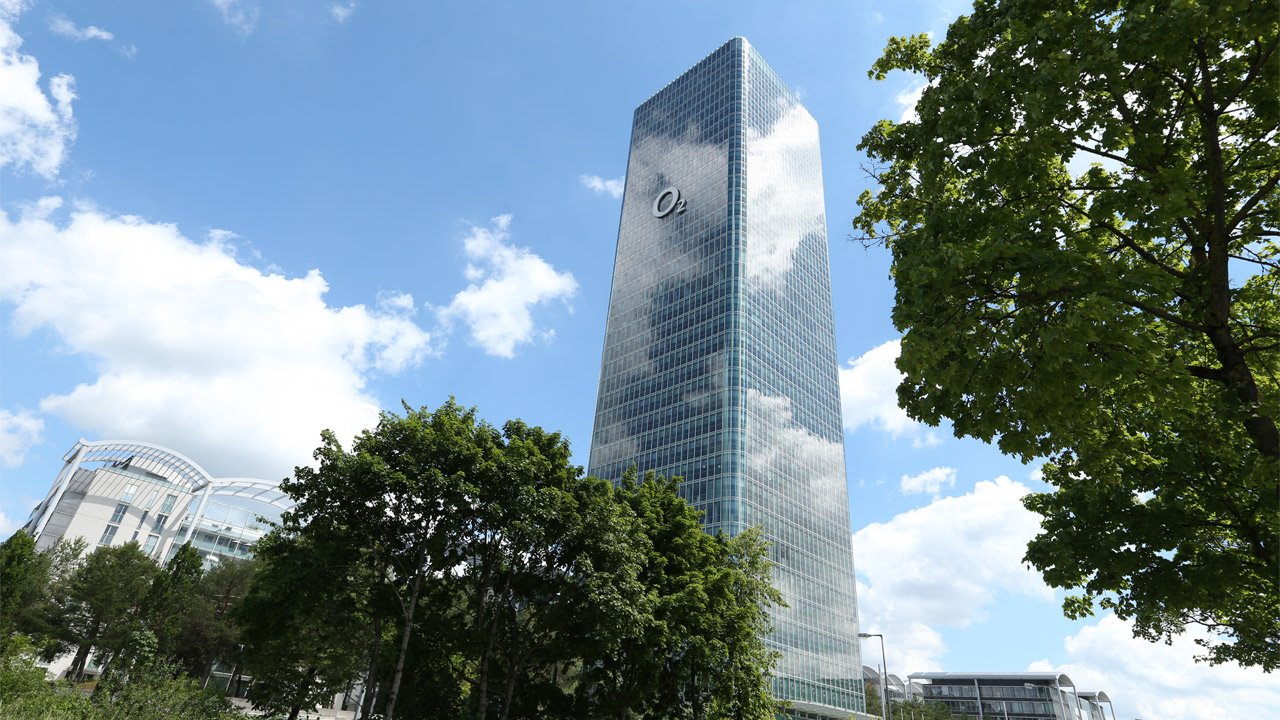
The O2 Tower in Munich
Telefónica Deutschland / O2 also made good progress with network expansion during the pandemic. The company recently reached an important milestone. Since the beginning of the year, it has set up 3,070 mobile network sites for the purposes of area coverage, which is more than forty percent of the 7,600 sites called for by the Federal Network Agency for this year. This means that the company has provided an additional 5 million people in Germany with 4G this year.
At the same time, preparations for the creation of a high-performance 5G network are in full swing. Capital expenditure (CapEx) amounted to 475 million euros in the first half of the year, with investments planned under the 'Investment for Growth' strategy set to increase further as the year progresses. However, it is expected that COVID-19 will have an impact on capital investment this year due to the restrictions in spring. Hence, Telefónica Deutschland anticipates the ratio of CapEx to revenue to be below the initially envisaged 17-18 percent. Nonetheless, the company is on track to achieve its roll-out targets for 2020.
| 1 | Special factors in H1 2020 amounted to ~63 million euros at revenue level, of which ~38 million euros were attributable to COVID-19. |
| 2 | Special factors in H1 2020 amounted to ~48 million euros at OIBDA level, of which ~23 million euros were attributable to COVID-19. |
Further detailed information on the financial result is available at
https://www.telefonica.de/investor-relations-en/publications/financial-publications.html
